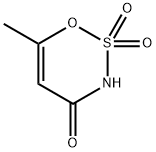Acesulfame:Preparation, Metabolism, Stability and Application Studies
Mar 2,2023
General Description
Acesulfame is awhite,solid, crystalline powder.It is used as artificial sweetener for food, also used in cosmetics.Even at room temperature, acesulfame dissolves readily in water. In alcohols, however,acesulfame is much less soluble. Aqueous solutions of acesulfame are almost neutral.In view of the temperature/solubility ratio of acesulfame solutions in water, the product can be easily purified by recrystallization. High-purity acesulfame can thus be produced on a technical scale while meeting the purity requirements for food additives.Acesulfame exhibits about 200 times the sweetness of a 3% sucrose solutiion. The mixtures of acesulfame with various other intense sweeteners had especially desirable sensory properties. In addition, blends of acesulfame and fructose are found to be not different from sucrose in sweetened beverages. Blending acesulfame with other intense or bulk sweeteners can help maximize the flavor profile of a food or beverage because the sweetener blend tastes more like sucrose.Mixtures of acesulfame with sugar alcohols have a full and well-balanced sweetness. Therefore, these mixtures are particularly suitable for sugarless confectionery, fruit preparations, and other foods that require a bulking agent.The acute oral toxicity of Acesulfame is so low that it can be regarded as practically nontoxic.The toxicological studies on Acesulfame demonstrated that the compound would be safe for use as an intense sweetener. according to studies showed that Acesulfame did not exhibit mutagenicity or carcinogenicity.[1]
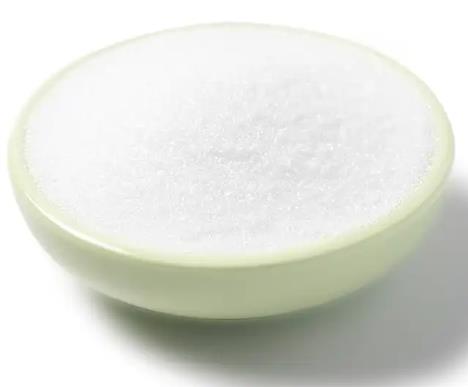
Figure 1 Acesulfame crystalline powder
Preparation
In the presence of sulfur trioxide,acetoacetamide-N-sulfonic acid cyclizes can form the dihydrooxathiazinone dioxide ring system, which may be reacted with KOH to yield acesulfame potassium salt. Continuous production of Acesulfame is possible using this route of synthesis. This allows large-scale production.[1]
Metabolism
Acesulfame is not metabolized by the human body.Because Acesulfame is excreted completely unmetabolized, it does not have any caloric value, all animal species, as well as humans, quickly absorbed Acesulfame, but there was rapid excretion of the compound, mainly in the urine.[1]
Stability
Long- term and heat stability are important factors for the use of intense sweeteners in many food products and in beverages. In aqueous media, Acesulfame is distinguished by very good stability. Acesulfame-containing beverages can be pasteurized under normal pasteurization conditions without loss of sweetness. Pasteurizing for longer periods at lower temperatures is possible, as is short-term pasteurization for a few seconds at high temperatures. Sterilization is possible without losses under the normal conditions (i.e., temperatures around 100℃ for products having lower pH levels and 121℃ for products around and greater than 4). Half-life values determined at 100℃ demonstrate that the common treatments of foods and beverages should not cause any substantial decomposition of Acesulfame. No indication of decomposition of Acesulfame was found even when biscuits with a low water content were baked at high oven temperatures for short periods. Potential decomposition products of Acesulfame can, therefore, be found only under extreme conditions.[1]
Applications
Acesulfame can be used as a sweetening agent in a wide range of products, for instance in low- calorie products, diabetic foods, sugarless products, oral hygiene preparations, pharmaceuticals, and animal feeds.Acesulfame is suitable for low-calorie and diet beverages because of its good stability in aqueous solutions even at low pH typical of diet soft drinks. In countries where mixtures of intense sweeteners with other sweetening agents are permitted, mixtures of Acesulfame with fructose, glucose, high-fructose corn syrup, or sucrose can be used. Generally, beverages containing such mixtures of Acesulfame with bulk sweeteners are rated to be fuller bodied because of the slightly higher viscosity and the different taste profiles of sugars and Acesulfame. Asubstantial number of low-calorie beverages, however, are sweetened with mixtures of Acesulfame and aspartame or other intense sweeteners. These beverages benefit from the synergism and the improved taste characteristics provided by such blends. Blend ratios between acesulfame and aspartame, in particular, are different in beverages having different flavors to match flavor and sweetness profiles. Of particular importance in beverages is sweetener stability, and Acesulfame'stability at lower pH increases sweetness retention in beverages versus sweeteners that have less stability.[1]
When blending Acesulfame with other intense sweeteners for beverage applications, the blend ratio may depend on different factors, including the flavor or flavor type.Emerging trends in beverages include replacement of sugar in fully sugared beverages with intense sweeteners like Acesulfame. Acesulfame exhibits excellent properties for use in this type of application.[2]Confectionery items can be made with Acesulfame if suitable bulkin ingredients or bulk sweeteners are added to give the necessary volume. The fast onset of sweetness of Acesulfame is beneficial in forming the initial taste. Therefore, Acesulfame-containing chewing gum has a pleasant sweet taste from the beginning. Because of its good solubility, Acesulfame may be dissolved fairly quickly by the saliva.Prolonged sweetness may be achieved by encapsulation of some of the Acesulfame or acesulfame in combinations with other sweetening ingredients. More recently, use of Acesulfame to enhance and extend sweetness in fully sugared chewing gums has been seen.[1]
Acesulfame combines well with suitable bulking ingredients and bulk sweeteners and therefore allows production of sweet-tasting baked goods having fewer calories. In diabetic products, combinations of Acesulfame and sugar alcohols like isomalt, lactitol, maltitol, or sorbitol can provide volume and sweetness. Texture and the sweetness intensity can be similar to sucrose- containing products. [3]Acesulfame can easily be used in fruit-flavored dairy products. It with stands pasteurization of fruit preparations and pasteurization of the product itself.Pharmaceuticals sometimes have unpleasant flavor or taste characteristics; again, Acesulfame can mask such bitter taste patterns.[1]
References
[1]von Rymon Lipinski G W, Hanger L Y. Acesulfame[J]. FOOD SCIENCE AND TECHNOLOGY-NEW YORK-MARCEL DEKKER-, 2001: 13-30.
[2]PV Tournot, J Pelgroms, JV DerMeeren. Sweetness evaluation of mixtures of fructose with saccharin, aspartame or Acesulfame[J]. J Food Sci.1985,50:469.
[3]PE Redlinger, CS Setser. Sensory quality of selected sweeteners: Unbaked and baked flour doughs[J]. J Food Sci.1978,52:1391.
- Related articles
- Related Qustion
- Acesulfame: Properties as Food Additive, Scope of Use and Safety Jan 30, 2024
Acesulfame is a stable, sweet, and inexpensive white powder used as a synthetic sweetener in various food and beverage products worldwide.
The entecavir, a viral replication inhibitor,and belongs to a carbocyclic guanosine nucleoside analog. It was approved for the treatment of chronic HBV infection in adults.....
Mar 1,2023APICapecitabine is a novel oral fluoropyrimidine carbamate that is preferentially converted to the cytotoxic moiety fluorouracil (5-fluorouracil) in target tumour tissue through 3 metabolic steps.....
Mar 2,2023APIAcesulfame
33665-90-6You may like
- What is the crystal structure of nickel silicide?
May 21, 2024
- What is the crystal structure of chromium silicide?
May 21, 2024
- Crystal Structure of Tantalum nitride
May 21, 2024
- AcesulfameK
-
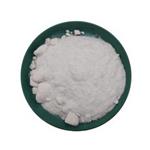
- $18.00 / 10kg
- 2024-05-09
- CAS:33665-90-6
- Min. Order: 1kg
- Purity: 99.9
- Supply Ability: 5000
- AcesulfameK
-
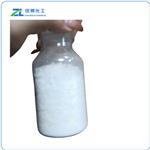
- $100.00 / 1kg
- 2024-05-01
- CAS:33665-90-6
- Min. Order: 1kg
- Purity: 99
- Supply Ability: 5000
- Acesulfame
-
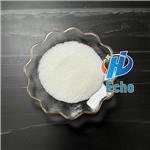
- $10.00/ kg
- 2024-04-29
- CAS:33665-90-6
- Min. Order: 1kg
- Purity: 99.7%
- Supply Ability: 200000kg




